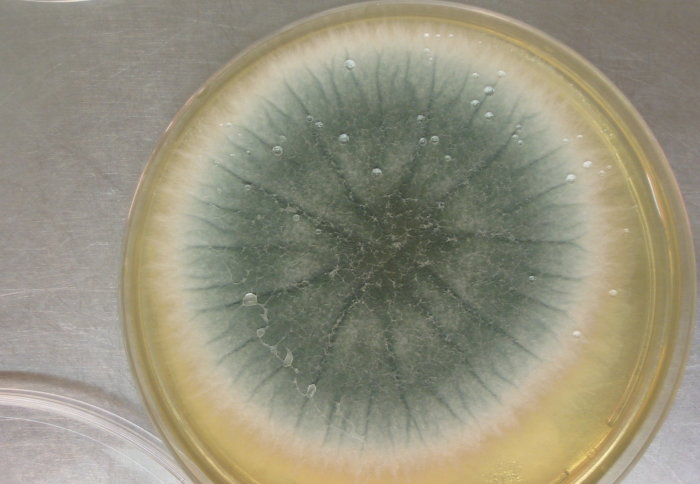
Aspergillus mould

New research has revealed how a common fungus, which kills an estimated 200,000 people a year, triggers our immune system.
Aspergillus fumigatus is a mould commonly found in dust, compost and damp buildings, whose spores can cause lung disease and allergic reactions, and are linked with asthma.
For most healthy people, inhaling the spores does not lead to disease but for those with compromised immune systems it can be deadly.
In vulnerable patients, such as those undergoing transplantation or chemotherapy, it can lead to invasive infections that are difficult to diagnose and treat, and can be fatal in more than half of cases.
By understanding exactly how these fungi trigger the immune system, our findings lay the groundwork for new tools to fight these difficult to treat fungal infections Professor Ten Feizi Study author
Now findings from a study, carried out by an international group including researchers from Imperial’s Department of Medicine, have shed new light on how our immune systems respond to this deadly microorganism.
In a paper, published in the journal Nature, a group led by the MRC Centre for Medical Mycology at the University of Aberdeen, identified a new mechanism that responds to an ‘unsuspected’ part of the fungus, triggering the immune system.
Previously, scientists thought that the immune system recognised the fungi from sugars in their cell walls, but the group found that immune cells have receptors that are able to recognise a pigment in the fungi called melanin.
They also found that variants of the receptor that detects the pigment, called MelLec, make some people more susceptible to infection.
New insight
According to the researchers, the findings could help in the development of new diagnostic tools and drugs to help combat these kind of infections.
Professor Ten Feizi, Director of the Glycosciences Laboratory at Imperial College London, said: “In our Wellcome Trust-supported carbohydrate microarray facility, we analysed the immune cell receptor (MelLec) for binding to a large number of sugar structures.
"It was unpredicted to find that it binds to melanin on the fungus rather than sugars, and this is what triggers the immune cells to respond."
Dr Yan Liu, the Project Leader of the Carbohydrate Microarray Facility in the Glycosciences Laboratory at Imperial said: "High impact collaborative research such as this is typical of the activities in our Carbohydrate Microarray Facility.
“By understanding exactly how these fungi trigger the immune system, our findings lay the groundwork for new tools to fight these difficult to treat fungal infections.”
Professor Gordon Brown, from the University of Aberdeen, who led the study, said: “This is a fungus that most of us come into contact with on a daily basis without consequence. However, for vulnerable people undergoing serious medical interventions, it can be fatal.
“Understanding how our immune system responds to this invader is crucial to improving our ability to identify its presence in infected people and to develop therapies to help us treat this disease.
“This latest finding revealed that our immune system is responding to parts of the fungus we previously didn’t know it recognised. Whilst this discovery is a huge step forward it emphasises just how complex the fight against these fungi is.”
-
'Recognition of DHN-melanin by a C-type lectin receptor is required for immunity to Aspergillus' by Mark Stappers et al. is published in Nature.
This article is based on materials from the University of Aberdeen.
Image: Aspergillus fumigatus - Wikicommons / Jankaan
Article text (excluding photos or graphics) available under an Attribution-NonCommercial-ShareAlike Creative Commons license.
Photos and graphics subject to third party copyright used with permission or © Imperial College London.
Reporter
Ryan O'Hare
Communications Division

Contact details
Tel: +44 (0)20 7594 2410
Email: r.ohare@imperial.ac.uk
Show all stories by this author




Leave a comment
Your comment may be published, displaying your name as you provide it, unless you request otherwise. Your contact details will never be published.